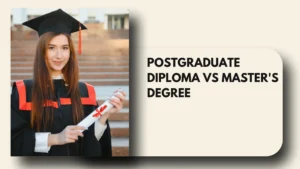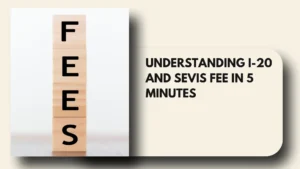- Australia has announced a National Planning Level of 295,000 international student places for 2026, bringing encouraging news for students worldwide. This increase represents a strategic policy shift by the Australian government, announced on 4 August 2025 by Education Minister Jason Clare.

Understanding the 295,000 Student Cap Structure
The Australian government has increased the National Planning Level from 270,000 students in 2025 to 295,000 students in 2026. This represents an addition of 25,000 places, marking a 9.25% increase over the previous year.
The 2026 cap sits 8% below the immediate post-COVID peak, reflecting managed growth focused on sustainability and quality.
Sector-Wise Breakdown of the Student Cap in Australia for 2026
| Sector | Student Places for 2026 |
|---|---|
| Public Universities | 145,000 |
| Private Universities | 30,000 |
| Vocational Education and Training (VET) | 95,000 |
International Student Allocation by University in Australia
The government has allocated New Overseas Student Commencement (NOSC) places across 31 Australian universities, with increases tied to investments in student housing and engagement with south-east Asian markets. Below is the breakdown of places offered to universities that saw increases:
| University | 2025 Allocation | 2026 Allocation |
|---|---|---|
| University of Melbourne | 9,300 | 10,500 |
| University of New South Wales (UNSW) | 9,500 | 10,350 |
| University of Queensland | 7,050 | 8,050 |
| Australian National University | 3,400 | 3,750 |
| Griffith University | 3,600 | 3,950 |
| Western Sydney University | 3,400 | 4,000 |
| University of Western Australia | 3,000 | 3,550 |
| Charles Darwin University | 2,300 | 2,650 |
| University of Newcastle | 1,600 | 2,050 |
Exemptions for Transitioning Students in Australia
The government has introduced exemptions for students already progressing through Australia’s education system. These exemptions provide security for students who might face uncertainty due to cap restrictions.
- International students transitioning directly from Australian secondary schools to publicly funded universities will not count toward the National Planning Level from 2026.
- Students moving from TAFE institutions or affiliated pathway providers to publicly funded universities are also exempt.
These exemptions particularly benefit international students who completed their schooling or vocational training in Australia, offering guaranteed progression into higher education without competing for capped places.
Visa Processing Preferences and Regional Focus
Australia gives faster visa processing to certain student groups based on regional partnerships.
Who Gets Faster Visa Processing:
- Students from Pacific Island countries
- Students from Timor-Leste
- Australian Government scholarship holders
What Indian Students Need to Know:
Most Indian applicants will go through standard visa processing times. You will not receive priority processing unless you hold an Australian Government scholarship. However, here is the good news: the addition of 25,000 new places means more spots are available across all nationalities.
What Indian Students Should Know Before Studying in Australia
Indian applicants planning to study in Australia face both opportunities and strategic considerations. Understanding the new policy framework helps you make informed decisions about your application approach.
Strategic Advantages for Indian Students:
- More seats available in 2026, especially in public universities in Australia (145,000 places)
- Students in pathway programmes (foundation courses or TAFE diplomas) benefit from exemptions when transitioning to university degrees
- Guaranteed progression without competing for capped places
Application Strategy Tips:
- Research institutions with established Southeast Asian partnerships and on-campus housing options
- Start your applications early and maintain complete documentation
- Prepare strong Genuine Temporary Entrant (GTE) statements that clearly articulate your study plans
Key Takeaways
Australia’s 295,000 student cap for 2026 brings 25,000 more opportunities than 2025, with public universities holding 145,000 places. For Indian students, this means better acceptance odds across all institution types. The smartest move: enrol in an Australian pathway programme like a TAFE diploma or foundation year first. You then bypass the cap entirely when moving to your bachelor’s or master’s degree, securing guaranteed university admission.
Your application success depends on timing and targeting. Apply early to institutions with strong Southeast Asian ties and on-campus housing, as they receive extra allocation priority. Prepare thorough documentation and a convincing GTE statement explaining your genuine study intentions.
Take the first step toward your Australian education journey. AdmitX provides end-to-end support from university selection to visa approval. Our services include:
- University Selection Guidance
- SOP Review
- Study-Abroad Document Templates
- Free IELTS Bootcamp Course
- Scholarship Assistance
- Visa Support Services
Book your FREE study-abroad counselling session today!
FAQs
Which students are exempt from the 2026 cap in Australia?
Students transitioning from Australian secondary schools or TAFE institutions to publicly funded universities are exempt from the cap.
How many places are allocated to public universities in Australia in 2026?
Public universities in Australia have been allocated 145,000 student places for 2026.
Do Indian students receive priority visa processing for Australia?
No, Indian students undergo standard visa processing unless they hold an Australian Government scholarship.
What is the current student visa application fee for Australia?
The Student visa (subclass 500) application fee is AUD $710.
How much money must Indian students show for Australian student visa proof of funds?
Students must demonstrate AUD $29,710 for living costs plus tuition fees and return airfare.
Can international students work whilst studying in Australia?
Yes, student visa holders in Australia can work up to 48 hours per fortnight during term and unlimited hours during breaks.
How many international student places has Australia allocated for 2026?
Australia has set a National Planning Level of 295,000 international student places for 2026.
What is the post-study work visa duration for graduates in Australia?
Students can work in Australia for 3-4 years post-graduation, with the exact duration determined by their campus location (regional or non-regional areas).
Are dependents allowed on Australian student visas?
Yes, postgraduate research students and those on certain scholarships can bring dependents; restrictions apply to other student categories.
What is the Overseas Student Health Cover requirement?
- Overseas Student Health Cover (OSHC) is a mandatory requirement for all Australian student visa holders to cover medical and hospital costs during their stay
If you are an aspirant looking to study at your dream university, book an appointment with AdmitX today and start your applications early to avail yourself of all the benefits.
















